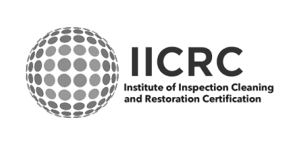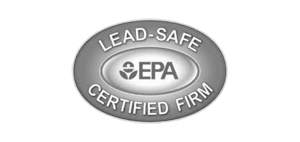If you’ve discovered mold growth in your home, you’re likely wondering how long it will take to remediate the problem. The timeline for mold remediation can vary depending on a variety of factors, from the extent of the mold growth to the size of the affected area. Understanding the various factors that influence the duration of mold removal can help ensure that the process is completed effectively and efficiently.
Key Takeaways:
- Mold remediation timeline can vary depending on the extent of the mold growth and the size of the affected area.
- The duration of mold removal can be influenced by the type of mold, the location of the mold, and the presence of any underlying moisture or water damage.
- The process of mold remediation typically involves assessing the mold infestation, developing a remediation plan, implementing mold removal procedures, drying and repairing affected areas, and conducting clearance testing and post-remediation evaluation.
- It is important to work with a professional mold remediation company to ensure that the process is completed safely and effectively.
- To prevent future mold growth, it is important to address any underlying moisture issues and maintain proper ventilation and humidity levels in your home.
Assessing the Mold Infestation
Before beginning the mold remediation process, it is critical to assess the extent of the mold infestation. Proper mold assessment helps identify the type of mold, ascertain the affected areas, and determine the severity of the problem.
The inspection process involves a thorough evaluation of your home, including walls, floors, ceilings, and ventilation systems. Trained mold remediation professionals use advanced tools like hygrometers and infrared cameras to assess the moisture levels in your house, identify areas of moisture intrusion, and locate mold growth.
| Mold Assessment Process | Description |
|---|---|
| Visual Inspection | A comprehensive visual inspection of your home is done to identify the areas affected by mold. This inspection may include access to the attic and crawlspaces. |
| Mold Sampling | Air and surface samples are collected to determine the type and concentration of mold present in your home. The samples are then sent to a laboratory for testing and analysis. |
| Moisture Mapping | The moisture levels in your home are evaluated using moisture meters, hygrometers, and thermal imaging cameras. This process helps identify sources of moisture and potential areas of mold growth. |
Once the mold growth and extent of damage are thoroughly assessed, a remediation plan can be created. The remediation plan outlines the scope of work and the necessary mitigation measures to remove mold from your home.
Developing a Remediation Plan
Once the mold infestation has been assessed, it’s necessary to develop a comprehensive mold remediation plan. This plan should outline the mitigation strategies and mold removal techniques necessary for effective and safe mold removal.
During the planning stage, it’s essential to identify the extent of the mold growth and determine the severity of the problem. Based on the assessment, the remediation plan will outline the scope of work required and provide an estimated timeline for completion.
The remediation plan should also include guidelines for safe mold removal, including appropriate personal protective equipment (PPE) for workers and establishing containment measures to prevent mold spores from spreading to unaffected areas of the house.
Mitigation strategies are an essential part of the mold remediation plan. These strategies may include removing contaminated building materials, using mold inhibitors, and reducing moisture levels to prevent future mold growth.
| Mitigation Strategies | Description |
|---|---|
| Removing contaminated building materials | Materials that are heavily contaminated with mold, such as drywall and carpeting, may need to be removed and replaced. |
| Using mold inhibitors | Mold inhibitors can be applied to surfaces to prevent future mold growth. |
| Reducing moisture levels | Reducing moisture levels through dehumidification or ventilation can help prevent future mold growth. |
The remediation plan may also include details on mold removal techniques, such as HEPA vacuuming, damp wiping, and air scrubbing. These techniques help remove mold spores and prevent them from spreading to other areas of the house.
Overall, the development of a comprehensive mold remediation plan is crucial for effective and safe mold removal. By implementing mitigation strategies and mold removal techniques, you can ensure the successful removal of mold from your house.
Implementing Mold Removal Procedures
After assessing the mold infestation and developing a remediation plan, it’s time to implement the actual mold removal process. This involves the use of various mold treatment techniques and containment measures to prevent the spread of mold spores to other areas of your home.
The following are the steps involved in the mold removal process:
- Containment: The first step in the mold removal process is to set up containment measures to prevent the spread of mold spores. This may involve the use of physical barriers such as plastic sheeting or negative air machines to create a negative pressure environment.
- Removal: Once containment is in place, it’s time to physically remove the mold from affected surfaces using a variety of techniques such as scrubbing, sanding, or HEPA vacuuming.
- Treatment: After removing the visible mold, it’s important to treat affected areas with antimicrobial agents to kill any remaining mold spores and prevent future growth.
- Disposal: All materials that cannot be salvaged must be carefully disposed of to prevent the spread of mold spores. This involves sealing them in plastic bags and disposing of them according to local regulations.
Throughout the mold removal process, it’s important to ensure the safety of occupants by following proper safety procedures such as wearing personal protective equipment and using proper ventilation systems.
Once the mold removal process is complete, it’s important to conduct a post-remediation evaluation to ensure the successful removal of mold. This may involve visual inspections, air sampling, or surface sampling to check for the presence of mold.
Drying and Repairing Affected Areas
After the mold has been removed, it is crucial to dry and repair the affected areas to prevent future mold growth. Effective drying techniques and moisture control are necessary to ensure the complete removal of any remaining moisture that could promote new mold growth.
The first step in the drying process is to remove any standing water by mopping or using a wet vacuum. Afterward, the use of dehumidifiers and fans can help to dry the affected areas efficiently. The type and placement of the equipment will depend on the extent of the moisture damage, with larger areas requiring larger and more powerful equipment.
| Drying Techniques | Description |
|---|---|
| Open Windows and Doors | This technique is suitable in mild cases where humidity levels are low. It involves opening windows and doors to promote ventilation and air circulation. |
| Dehumidifiers | Dehumidifiers, either portable or industrial-sized, are used to control humidity levels in the house and minimize moisture in the air. |
| Fans and Air Movers | High-velocity fans and air movers aid in the circulation of air, helping to dry wet surfaces more efficiently. |
| Heat | In areas where humidity levels are low, the use of heat can help to evaporate the moisture and dry the affected areas. |
Once the area is dry, repair of any damage caused by the mold infestation can begin. This process may include replacing any damaged materials or rebuilding parts of the house. It is imperative to ensure that all repairs are completed thoroughly and correctly to prevent any future moisture or mold problems.
In conclusion, proper drying techniques and moisture control are crucial in the prevention of future mold growth after remediation. Effective repair of any mold damage ensures a safe and healthy living environment for you and your family.
Clearance Testing and Post-Remediation Evaluation
Once the mold remediation process is complete, it is important to conduct clearance testing and post-remediation evaluation to ensure the successful removal of mold from your house. Clearance testing involves testing the air quality and surfaces in the affected areas for any remaining mold spores or evidence of mold growth.
Post-remediation evaluation involves a thorough inspection of the treated areas to verify that all mold has been removed and to evaluate the effectiveness of the remediation process. This evaluation may include visual inspections, moisture testing, and air quality sampling.
Clearance testing and post-remediation evaluation are critical in determining whether the remediation process was successful and to ensure that your house is safe for occupancy. By identifying any remaining mold or areas that require additional treatment, you can avoid potential health problems and future mold growth.
Conclusion
Congratulations on taking the necessary steps to learn about the mold remediation process. By understanding the timeline and procedures involved, you can ensure your house is free from harmful mold growth. Remember to thoroughly assess the extent of the infestation, develop a comprehensive remediation plan, and implement effective mold removal procedures. Don’t forget to dry and repair the affected areas and conduct clearance testing and post-remediation evaluation to ensure a successful mold removal process.
Always prioritize the safety of your family and make sure to hire a professional mold remediation company with the necessary expertise and equipment to handle the job effectively. With proper mold remediation, you can create a safe and healthy living environment for you and your loved ones.
Call CDS Restore today at 1.954.799.4719 for professional mold remediation services.
FAQ
How long does it typically take to remediate mold in a house?
The duration of mold remediation can vary depending on several factors, including the extent of the mold infestation, the size of the affected area, and the complexity of the mold removal process. In general, it can take anywhere from a few days to several weeks to complete mold remediation in a house.
How is the mold infestation assessed during the remediation process?
The mold infestation is assessed through a comprehensive inspection process. Qualified professionals will identify areas affected by mold growth, determine the severity of the problem, and assess any potential risks or safety concerns. This assessment helps in developing an effective remediation plan.
What is involved in developing a mold remediation plan?
Developing a mold remediation plan involves creating a detailed strategy to address the mold infestation. This includes selecting appropriate mitigation strategies, determining the best mold removal techniques, and outlining the necessary steps for successful remediation. The plan takes into consideration the specific requirements of the mold situation and aims to eliminate the mold problem effectively.
What are the steps involved in the mold removal process?
The mold removal process typically includes several steps. These can include establishing containment measures to prevent the spread of mold spores, physically removing the mold growth, using appropriate treatment methods to kill and eliminate mold, and ensuring the safety of occupants throughout the remediation process.
How is drying and repair carried out after mold removal?
After the mold has been removed, it is crucial to dry and repair the affected areas to prevent future mold growth. This involves using various drying techniques, such as dehumidification and ventilation, to eliminate moisture. Additionally, any damaged materials or surfaces may need to be repaired or replaced to restore the affected area to its pre-mold condition.
Why is clearance testing and post-remediation evaluation important?
Clearance testing and post-remediation evaluation are essential to ensure the successful removal of mold from your house. Clearance testing involves independent testing to confirm that the mold remediation was effective and that the indoor environment is safe. Post-remediation evaluation assesses the results and provides valuable insights into the efficacy of the remediation process, helping to determine if any additional measures are needed.









